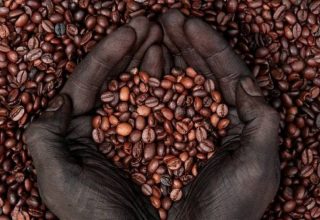Climate change, deforestation, pests and diseases threaten the continued existence of wild coffee species around the world, recent research reveals. About 60 percent of them, including popular commercial coffees Arabica and Robusta, face possible extinction, scientists at the Royal Botanic Gardens in Kew, England, warn via published research on Wednesday.
The revelation raises serious concern on the consequent economic, social, and environmental impact this could have around the world particularly for countries like Ethiopia that depend on coffee for a bulk of their export earnings. Not to mention the millions of farmers, especially smallholder farmers, that rely on this crop for their livelihood. Over 100 million people around the world depend on coffee for their livelihoods, with around 25 million smallholder farms producing 80 percent of the world’s coffee.
Ethiopia is Africa’s biggest coffee exporter, and seventh biggest globally, exporting $1billion worth of coffee annually. Between 2017 and 2018, the country’s coffee production reached 7.7 million 60kg bags with about 15 million people working in coffee production.
According to the research, the number of locations where Arabica coffee grows in Ethiopia could reduce by as much as 85 percent by 2080 and up to 60 percent of the land used for coffee production could become unsuitable by the end of the century due to climate change. The wild Arabica is native to Ethiopia. It is an important seed stock for growing coffee and is also harvested for commercial purposes, hence, its extinction could be economically damaging on the country.
The projected extinction of Arabica and Robusta will also affect commercial coffee production on a global scale. The multi-billion coffee sector relies on just these two coffee species. But with looming threats, farmers will have to look to other species for coffee farming. Still, the cultivation of other alternatives is not guaranteed as over 60 percent of them face extinction.
Scientists at the Royal Botanic Gardens also say that the wild Arabica and Robusta species hold the key to cross-breeding the coffee varieties of the future, species more resilient to the effects of climate change and more resistant to diseases.
“In Ethiopia, these genetic resources continue to provide an important source of new planting material for coffee ‐ farming, via seed and seedlings, including disease-resistant variants, and the intrinsic (genetic) variation associated with the various flavour profiles found across the coffee landscape,” the research states.
The way forward
The research is simply to raise awareness of the threats faced by coffee species and spur the sector into action to try and improve the prospects for wild coffee and commercial coffee production. Appropriate interventions and planning measures including preventing deforestation, encouraging reforestation, and research into coffee varieties and the pests and diseases afflicting them, could make a positive impact in the future of coffee production.
Aaron Davis, head of coffee research at Kew has called for urgent targeted action specifically in tropical countries in Africa and in forested areas that are being hit hard by climate change. Actions including improved management and designation of protected areas like nature reserves, and new protected areas for wild coffee species. He also called for renewed focus on germplasm collections like living collections and seed banks.
Davis also suggested an increase in the price of coffee as farmers have long suffered from being at the wrong end of the value chain. “Coffee farmers around the world are in many cases the guardians of cultivated coffee’s sensory diversity,” he said. “If prices remain low for too long some farmers will eventually stop growing coffee and we will lose much of what makes coffee special.”








